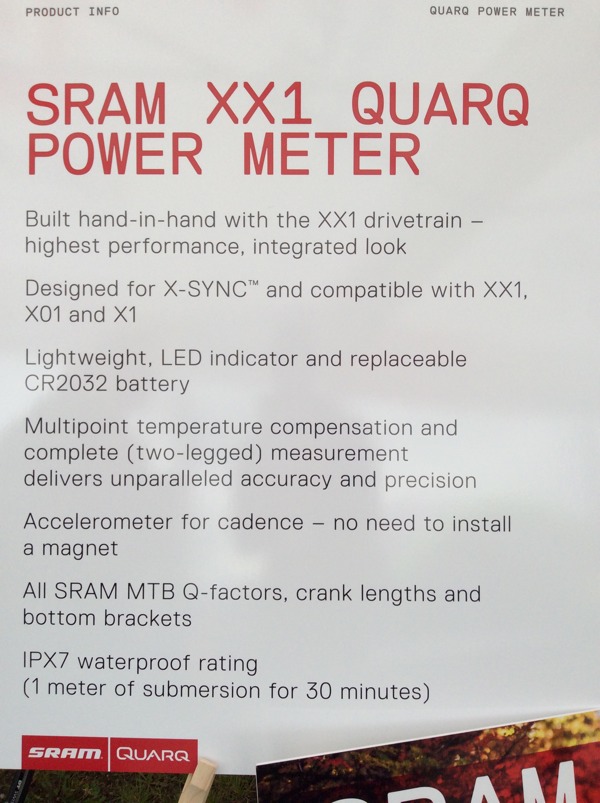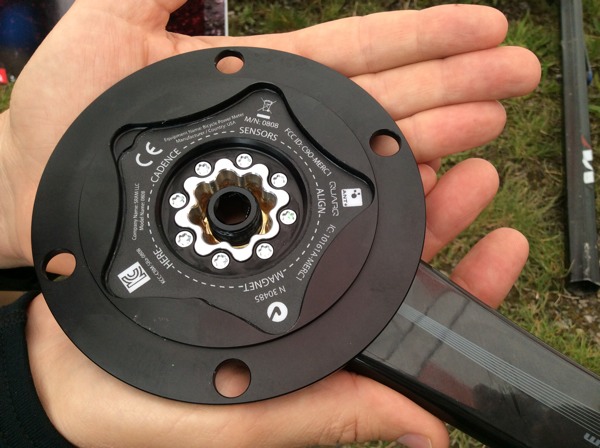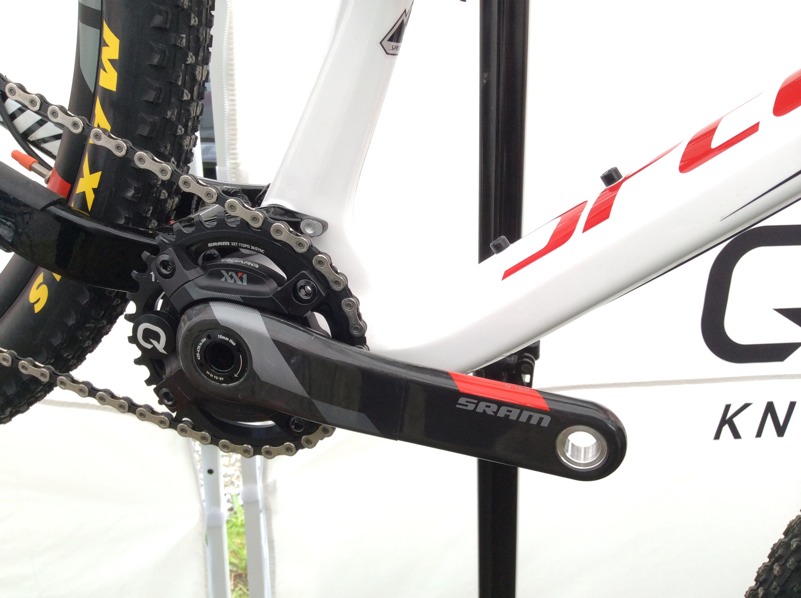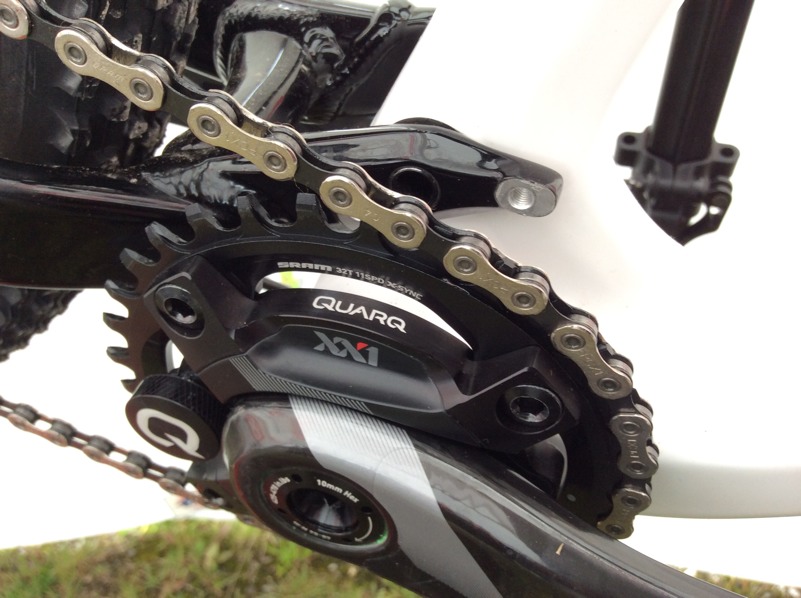Quarq has officially launched their XX1 power meter spider for all SRAM 1x mountain bike cranksets. It’s available as a chassis, built onto an XX1 level crank arm using a new mounting interface and other new features.
It adds in “multipoint, active temperature compensation” that’s pulling from 10,000 data points to calibrate it as it’s cycled from 0° to 130° F. That provides a baseline setting for temps within that range. So, outta the box it knows what the calibration should be for any temperature you’re likely to ride in, staying accurate for the whole ride, season to season.
Power through for more new features that’ll carry over to all their power meters…
They’ve also given it the ability to measure cadence through the accelerometer, no longer requiring a magnet. That feature is a firmware upgrade, so it’s backward compatible to any PM with the LED and CR2032 battery (all current gen units – Elsa, Riken, Red).
And that update is easier than ever to do. It’s available through their Qalvin software, which is now available on more platforms. Qalvin 1.5 updates to add Windows and Mac desktop compatibility, and is still a free download and still available as an iOS or Android app, too.

It’ll fit any of SRAM’s 1x cranksets. It fits 104bcd chain rings from 32T to 38T, so you may need to get a standard X-Sync chainring rather than the direct mount chai rings that come with XX1.

If you recall the announcement of Quarq’s move to a lower cost, module based sales strategy, they started selling the PM spider with a crankset attached but without chainrings. The only ones your could buy as just the spider were for Specialized and Cannondale. They mainly wanted to sell the SRAM ones as a complete system because they wanted to assemble it and calibrate input at the factory to ensure the best customer experience. But, it was still mounting via SRAM’s usual three-bolt design.
The new modules for XX1 and another new one we can talk about tomorrow are using a new 8-bolt mounting interface, which they say enhances accuracy a bit by creating a more robust spider/crank interface. Quarq’s Product Manager Troy Hoskin says it’s not that there was anything wrong about the original mounting method, but this also helps improve the manufacturing process and serviceability. The old interface used Locktite on the entire spider/crank interface that’s left to cure, then it’s bolted on. That made it harder to remove. The new design does away with the Locktite, but gets bolts running the entire circumference. Eventually, this new design will carry over to all of their SRAM-based offerings.

